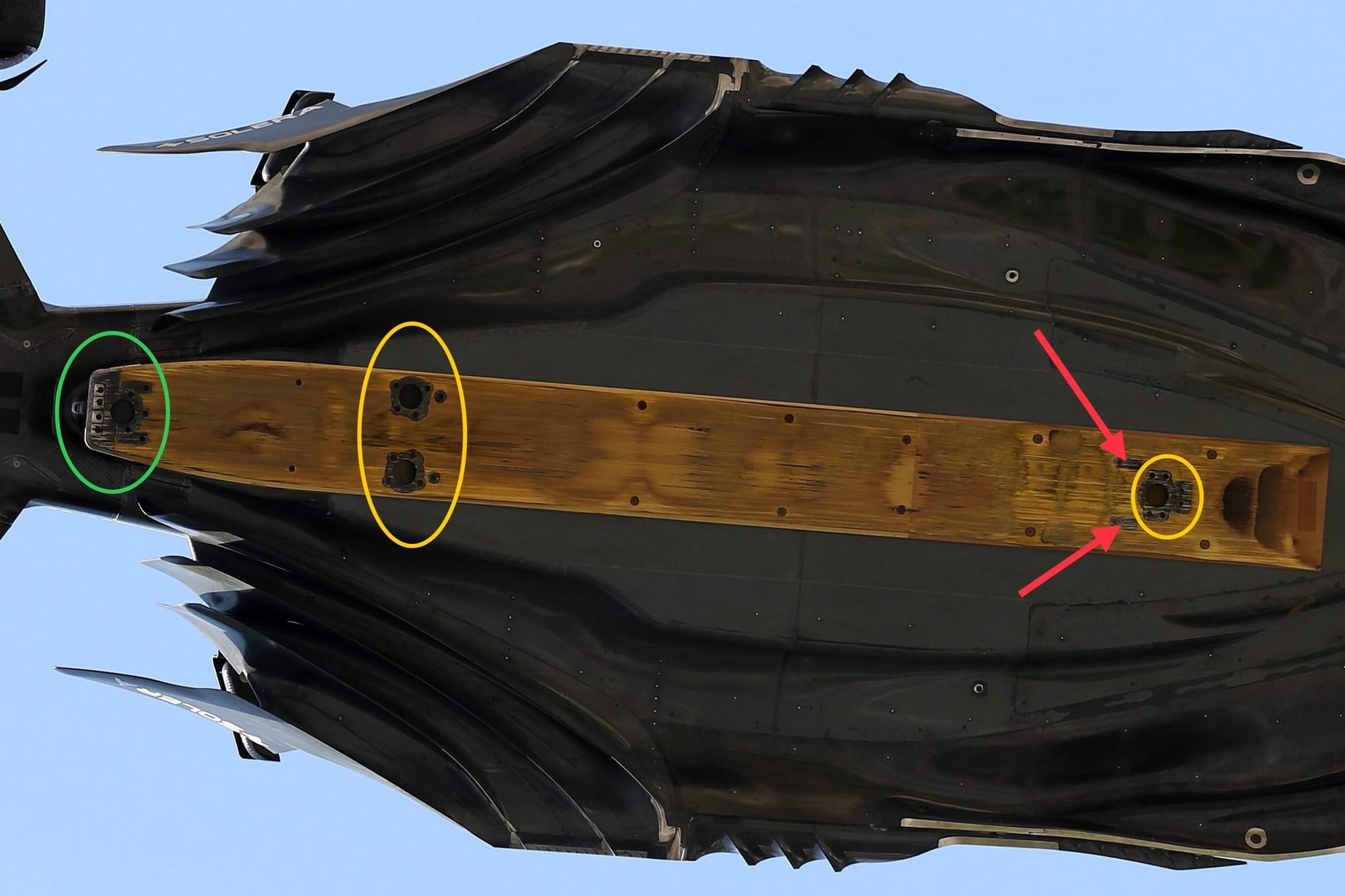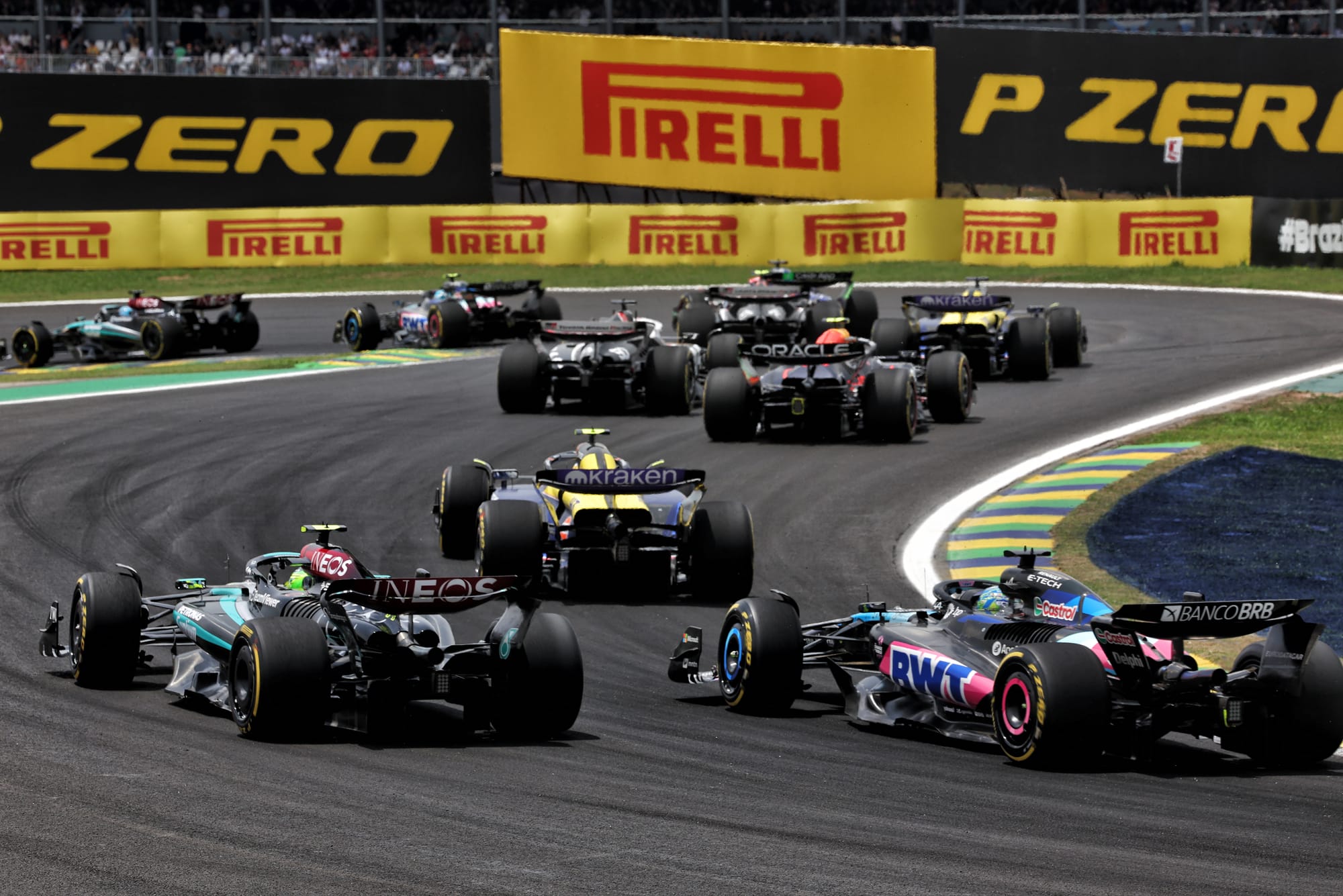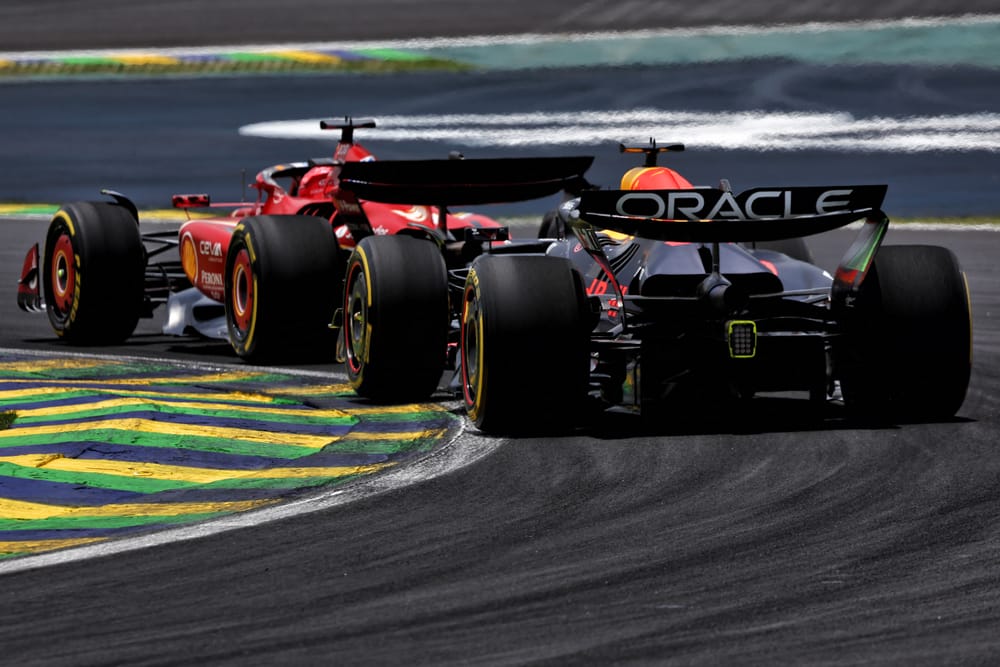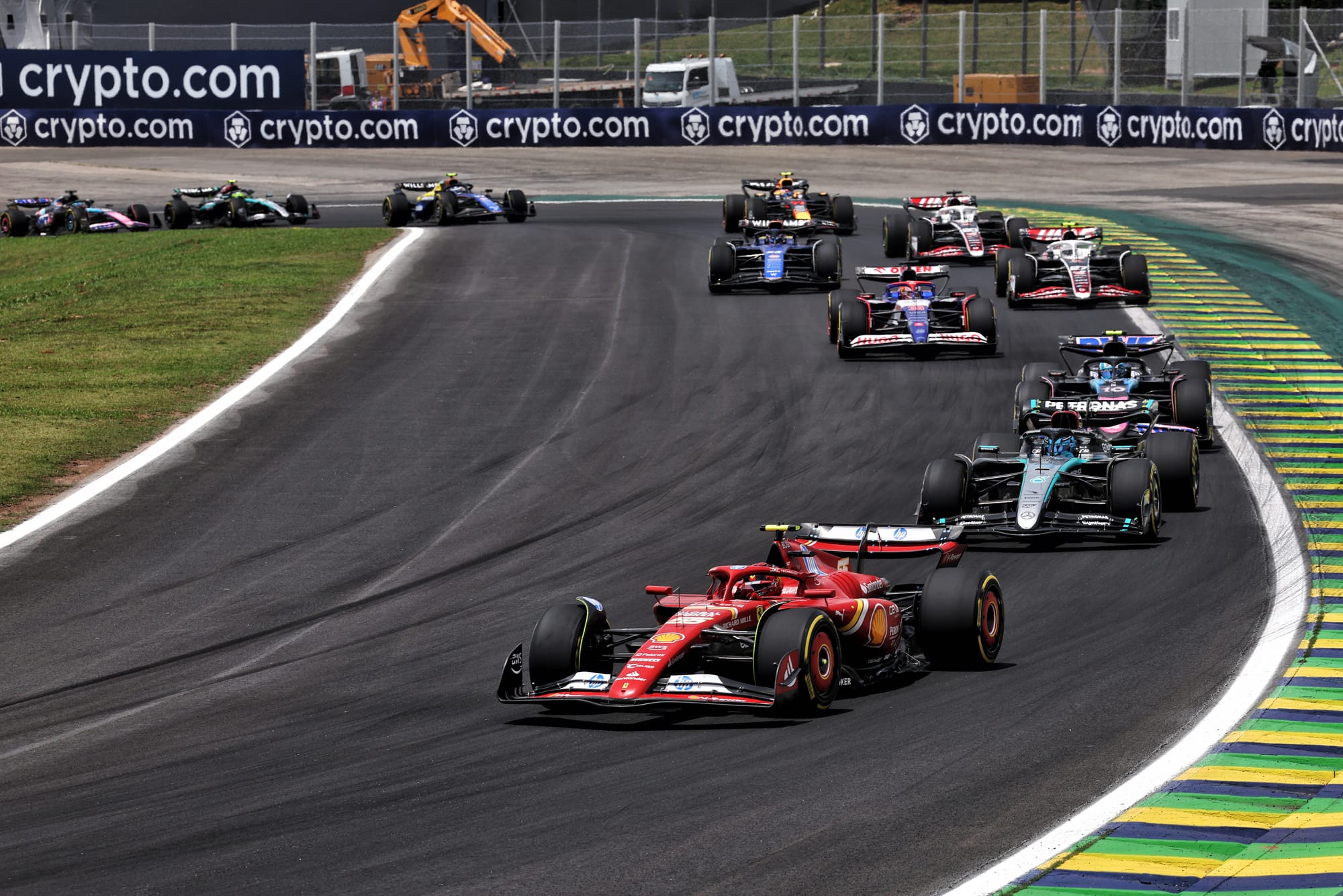Up Next

Formula 1 2024's long list of technical controversies has another entry, as a technical directive clarifying the way in which skids may be attached to cars' floors was issued on the eve of the Las Vegas Grand Prix weekend.
That's resulted in at least half the grid - including Red Bull, Ferrari and Mercedes - making changes, despite some teams pushing back and asking for the TD's introduction to be deferred to the end of the season.
Former F1 technical director Gary Anderson explains what gets checked and how teams have been exploiting this for some time, and offers a solution that he believes would actually stop the problem of cars bottoming out.

Although a bit out of date, this underfloor picture of the Mercedes illustrates the skid blocks that the FIA's new technical directive is referring to.
The front skid within the green ellipse shows how the bib is protected. This is also where most of the sparks come from.
This area also has a very complicated sprung mounting system that allows it to deflect upwards after a certain vertical load to protect the forward area of the chassis from damage.
The yellow ellipses show the front and rear skids that are subject to thickness checks. You can see the holes in the skid, which are the areas where the FIA checks the plank's thickness - which the regulations stipulate must be 10mm (± 0.2mm), with a minimum thickness of 9mm accepted "due to wear".
The red arrows are the questionable extra skids. For many years, teams have been mounting these extra skids in the most beneficial area to protect the critical skid/plank thickness but now, after all this time, the FIA has decided to alter the size - or you could even say the position - of the goalposts.
The FIA could simply say 'no other skid or mounting can be within X millimetres of the legality skids' but as far as we understand it, the technical directive goes into much more positional detail than that so I imagine it's another example of way over the top jargon.
The plank was added to the cars after Ayrton Senna's death in 1994 to reduce the risk of the teams running the car too low (nothing is new) and have them bottoming out, which could cause the cars to lose grip and slide off the track. After a few plank wear problems, some skids were allowed in critical areas and from then on the mandatory plank wear was protected by these skids.
As always, the teams will manipulate the regulations to their best advantage and that is exactly what has happened through time.

I have been in motorsport in one capacity or another for over 50 years and nothing changes, as time has passed the regulations have simply got more and more complicated. The regulatory body doesn't ever seem to look back and question why a regulation is there; when something needs some sort of clarification that clarification usually adds more complication to the matter.
If you really want to get on top of this car bottoming problem, just step back in time and define that when new the plank mountings cannot protrude from the plank surface, or are even recessed by a minimum of one millimetre (the maximum plank wear allowable).
That would very quickly remove any driver complaints of back ache from the car bottoming and it would also reduce the complication of what was initially a very simple rule to reduce the risk of cars flying off the track from excessive bottoming.




